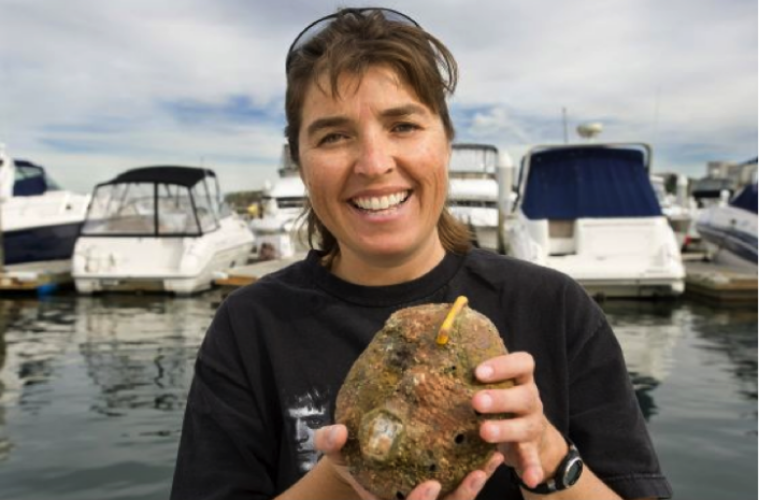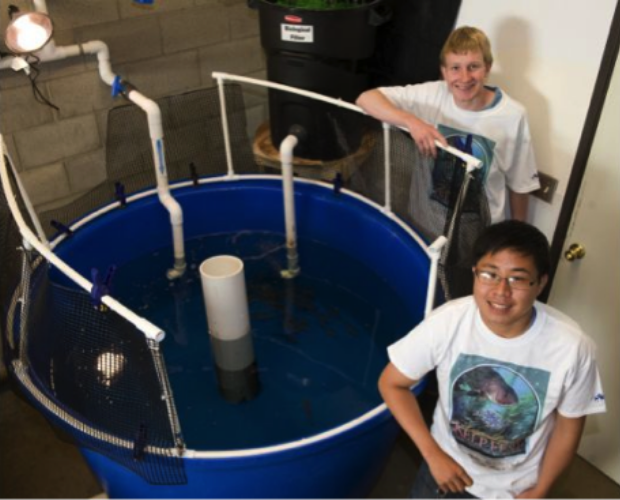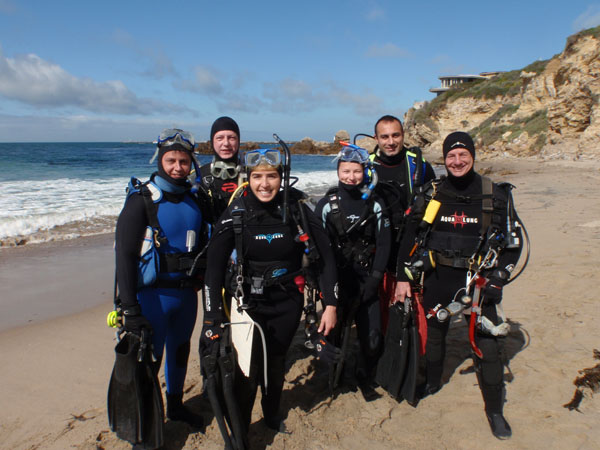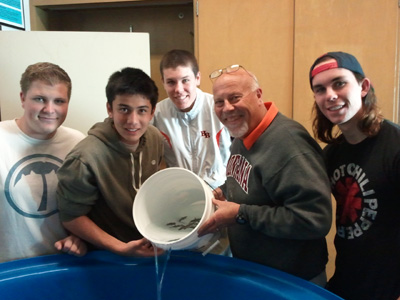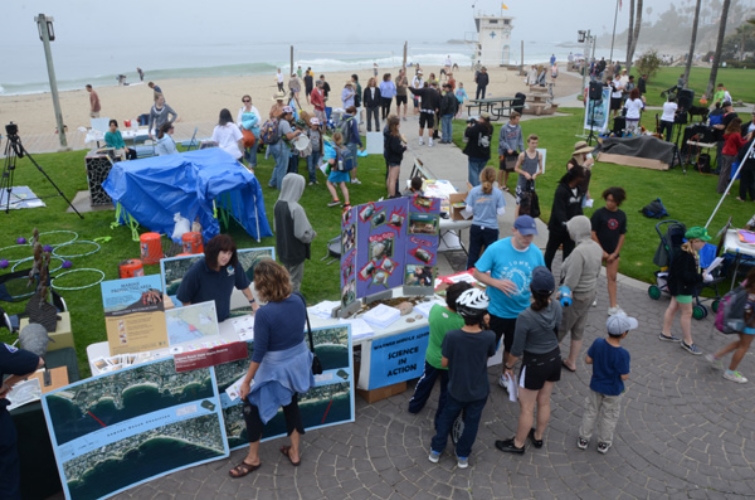Andy James
After the Grant: Project Update July 2016
The Original Grant Summary
The Organization
Get Inspired! , a 501(c)3 non-profit based in Garden Grove, CA
Get Inspired! is focused on: Wildlife habitat conservation - Wildlife habitat creation - Native species promotion - Research and species inventories - Other good stuff
The Mission
"Our mission is to inspire stewardship for the natural world through the discovery of science and the arts. We do this through a variety of programs aimed at involving the community in hands on restoration of their coastal kelp forest ecosystem and by getting people to experience nature.
Our ocean restoration programs have involved more than 7,000 students who grow giant kelp, white seabass, or green abalone in their classrooms to replenish our oceans. Hundred of volunteer divers have been trained to plant and monitor these organisms. We have successfully restored the kelp forests or Orange County, California after they disappeared 27 years go and now we are working on restoring the species that once thrived in them by including the community in their restoration so that they have a take in the ecosystems health."
The Project
"Abalone once teemed the shores of California and supported a large commercial fishery. At one time abalone were so plentiful, revered scientists considered it "impossible" that we would ever run out. Well, we did! With 50 years of mismanagement, overfishing, and finally disease, of the 7 abalone species that once lived in California, two are on the Endangered Species list, two are listed as Federal Species of Concern and the others are also in decline. Green abalone are a federal Species of Concern and their habitat range is in Southern California. The green abalone populations are calculated to be at 1% of the historical baseline densities. Although all harvest was halted in 1997, the species has yet to recover which indicates that it might need some help in that process. Because abalone are broadcast spawners, they must release their gametes into the water synchronously and they need to be in close proximity to one another for eggs and sperm to mix. Unfortunately, the densities are so low that successful reproduction is not occurring. Abalone are long lived animals and eventually, it is inevitable that they will simply die off.
After three years of research and investigation on the status of the species, in 2013 we received the first abalone restoration permit given out in 15 years from the California Department of Fish and Wildlife. We immediately started a one year pilot project to restock large adult green abalone. Because abalone stocks around the globe are in decline and the value of their meat is so high (up to $80/ lb) many projects have been launched over the last 40 years to restore them. Most projects use larval or juvenile abalone because of how long they take to grow. This is problematic because small abalone are easy prey and hard to find. Success and survival in these projects has been limited. We decided to use large adult farm raised abalone (>6” or 10+ years old) to assess their survival and success. This had never been done before. After one year we found that we had 39% survival. This was one of the highest reported survival rates found in scientific literature. We plan to publish these findings in 2016.
Building on this success, we are launching a project to save this species and act as a model for similar projects around the world. We have the recipe to change the course of one of our California native species from certain extinction. In December 2015 we will go out in search of broodstock green abalone who will become parents to 100,000 young animals that we will raise for up to 10 years and then restock on local reefs of Los Angeles and Orange Counties. This will be a two million dollar project ($200,000/year for 10 years). During this long grow out phase, the animals will act as ambassadors for their species in three different public aquariums who have pledged their assistance to the project. The story of the green abalone needs to be told. Although abalone and humans have a long rich history dating back 13,000 years to the native Americans, now anyone under 50 years old, has no idea what an abalone is. We will educate hundreds of thousands of people each year about the abalone and how in one human lifetime, we ate them all! This story is incredibly powerful and we can take away many lessons from our actions.
We will also be building small abalone nurseries to involve thousands of students in their classrooms. This was already done during our pilot program and we found that we were able to successfully tell the “Abalone Story”, get students invested in their care and in their release which creates ocean stewards for life. Students test the water chemistry daily, feed the abalone, they are taught lesson son the biology and ecology of the species and the students become attached to the animals before release in the ocean, giving them a stake in their survival.
Starting in year five, we will begin to outplant abalone. Our intention is to find the most economical size with the highest survival so we will outplant at 5 years old, 6 years old, 7years old, up to 10 years old and monitor their survival. All of the outplanting and monitoring will be done by volunteers and will include the aquariums and their dive teams. This is a massive undertaking and will require hundreds of volunteers. This is the same model used for the kelp restoration project (students and volunteer involvement) and the results of ownership of the project by the community were astounding. It is very obvious that the more the public buys into the idea of restoration and conservation, the better off the restored species will be."
Key Project Milestones
- Our pilot project is completed so we know our idea will work, now we just need fundraise and scale it.
- We have the commitment from the aquariums to help us grow the abalone.
- We have applied for our collecting permit to begin the project in November.
Rough Budget for This Project
$2 million over 10 years

